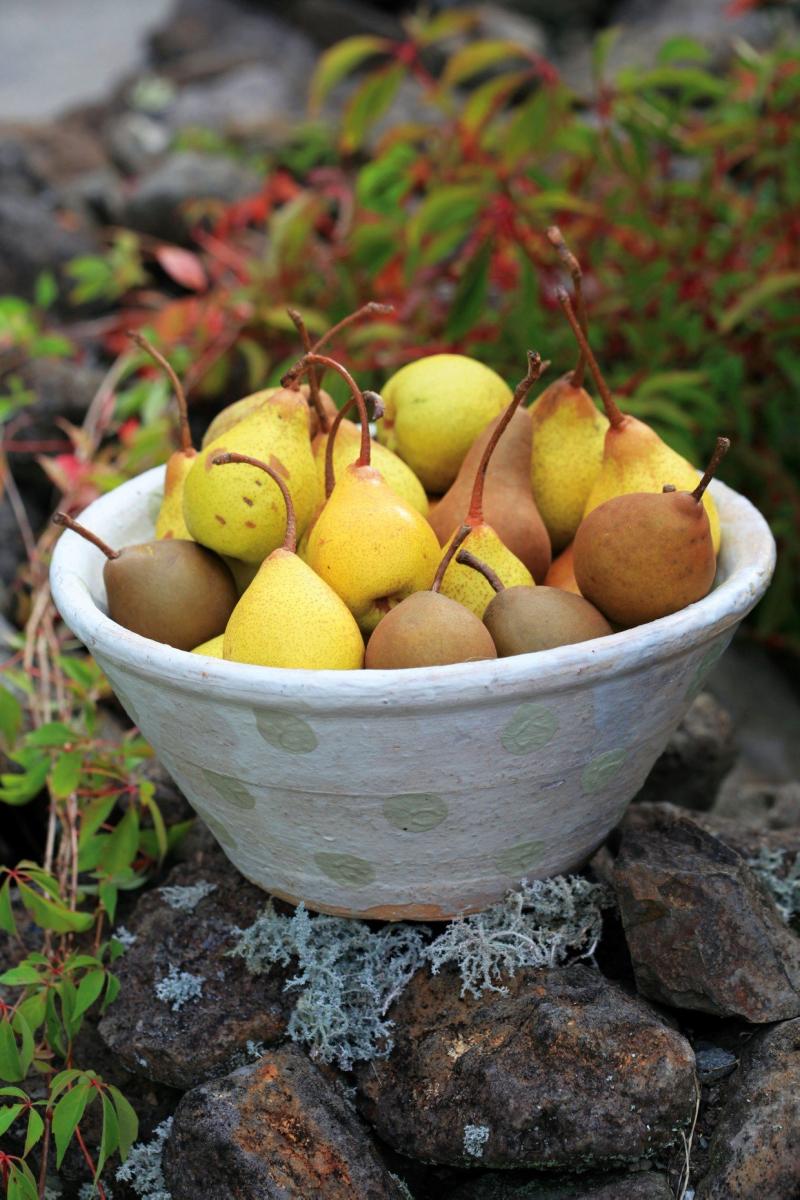
Know what’s happening
Access the private noticeboard for verified neighbours near you. Keep informed about any suspicious activity, send urgent updates to your neighbours when required and discuss emergency planning.
Get to know your neighbours
Browse the directory and start getting to know your neighbours. Don’t want to post to the whole neighbourhood? Send a private message.
Buy, sell and give away
Want to declutter your garage? Buy some used household items? Give away some garden stuff? Become a verified neighbour to browse and post items for sale. Trading is simple when everyone lives nearby.


Have a browse...
Check out what your neighbours are selling (or giving away!) here.

Thank you for using Neighbourly
You may receive an email confirmation for any offer you selected. The associated companies will contact you directly to activate your requests.
The Team from Neighbourly.co.nz
There's been some products recalled in the past month and we want to make sure you're not using these. Check out the list and click on the blue text to find more information.
Food recalled:
Century hot & spicy tuna
Supremely Gourmet chocolate
… View moreThere's been some products recalled in the past month and we want to make sure you're not using these. Check out the list and click on the blue text to find more information.
Food recalled:
Century hot & spicy tuna
Supremely Gourmet chocolate
Make it Raw brand Spiced Apple and Buckwheat Grawnola
Pams brand Tempura Coated Chicken Nuggets
Products recalled:
Anko glass flip pickle jar sold at Kmart
LABKA extension cord sold at Panda Mart
Panda Mart table lamps - various types
Young Original baby sleep suit sold at Warehouse
Beacon Marine 12v adaptor
Petzi Newton European harness
Husqvarna & GasGas Motorcycles with Braktec brake system
Line7 velcro inflatable life jacket
Yamaha G29 & UMX golf car
Igloo rolling cooler/chilly bin
Peach Primer sold at Panda Mart
Chistmas beaded bauble sold at Farmers
Spirit of Equinox Herbal Magick Infused Spell Candles
We hope this was helpful!
Ernest Rutherford Retirement Village
FRIDAY 21 & SATURDAY 22 MARCH, 10AM - 2PM
After an incredible turnout at our recent open days, we’re excited to open our doors to you again!
Don’t miss joining us at our open days and explore our lifestyle and care options, tour our show homes and see the amenities on offer. Plus, … View moreFRIDAY 21 & SATURDAY 22 MARCH, 10AM - 2PM
After an incredible turnout at our recent open days, we’re excited to open our doors to you again!
Don’t miss joining us at our open days and explore our lifestyle and care options, tour our show homes and see the amenities on offer. Plus, for a limited time, when you move into an independent apartment or townhouse, we’ll give you a $15,000 House of Travel Gift Card*.
*Participating villages only, terms and conditions apply.
Click read more for more information.

The Team from Neighbourly.co.nz
Dave Stephens has created a pet cemetery on his land.
The 10-acre site in Albany, Auckland, features graves nestled among beautifully manicured gardens and unique art pieces, offering a serene space where visitors can pay their respects in their own way.
Is a local pet cemetery something … View moreDave Stephens has created a pet cemetery on his land.
The 10-acre site in Albany, Auckland, features graves nestled among beautifully manicured gardens and unique art pieces, offering a serene space where visitors can pay their respects in their own way.
Is a local pet cemetery something you think you would use? Share your thoughts below.

103 replies (Members only)
Mei Leng Wong Reporter from NZ Gardener & Get Growing
Kia ora neighbours. We give away free copies to readers whose recipes are used in our magazine, and we're still on the hunt for pear recipes! Send your family's favourite way to use up this delicious fruit, to mailbox@nzgardener.co.nz, by the end of this week . If we use it in the mag, … View moreKia ora neighbours. We give away free copies to readers whose recipes are used in our magazine, and we're still on the hunt for pear recipes! Send your family's favourite way to use up this delicious fruit, to mailbox@nzgardener.co.nz, by the end of this week . If we use it in the mag, you will receive a free copy of the April issue.

43 replies (Members only)
The Team from Ryman Healthcare
FRIDAY 21 & SATURDAY 22 MARCH, 10AM - 2PM
After an incredible turnout at our recent open days, we’re excited to open our doors to you again!
Join us at our open days and explore our lifestyle and care options, tour our show homes and see the amenities on offer. Plus, for a limited time,… View moreFRIDAY 21 & SATURDAY 22 MARCH, 10AM - 2PM
After an incredible turnout at our recent open days, we’re excited to open our doors to you again!
Join us at our open days and explore our lifestyle and care options, tour our show homes and see the amenities on offer. Plus, for a limited time, when you move into an independent apartment or townhouse, we’ll give you a $15,000 House of Travel Gift Card*.
*Participating villages only, Ts and Cs apply
Learn More

The Team from Neighbourly.co.nz
What can you do if you buy something that breaks soon after you buy it? It's time for another helpful Q&A.
Today we have Andrew Hubbard from Citizens Advice Bureau New Zealand (CABNZ) who will be answering your questions about your consumer rights.
A little bit about Andrew:
Dr … View moreWhat can you do if you buy something that breaks soon after you buy it? It's time for another helpful Q&A.
Today we have Andrew Hubbard from Citizens Advice Bureau New Zealand (CABNZ) who will be answering your questions about your consumer rights.
A little bit about Andrew:
Dr Andrew Hubbard is deputy chief executive of Citizens Advice Bureau New Zealand (CAB) and loves working for the CAB so much that he’s been there for more than fifteen years.
Andrew believes in the difference people can make working together in the community and loves being able to support the work of the more than 2000 CAB volunteers across the motu. Andrew’s background is in policy and he’s been actively involved in consumer issues for the fifteen years he’s been at the CAB.
Andrew and the CAB team are ready to answer your questions about your consumer rights. This might be questions about when you can get a refunds, your rights when buying via Facebook or overseas, product delivery issues and what to do if a retailer won't sort a problem out for you.
Andrew is here live on Wednesday from 9.30am for your questions.

37 replies (Members only)
The Team from Neighbourly.co.nz
We've all heard about the school lunch saga happening around the country, with some questioning the quality of the meals. Since kids can be picky eaters, it raises the question - what makes a great school lunch?
Let's not debate why times are tough and these kids need school lunches, … View moreWe've all heard about the school lunch saga happening around the country, with some questioning the quality of the meals. Since kids can be picky eaters, it raises the question - what makes a great school lunch?
Let's not debate why times are tough and these kids need school lunches, let's brainstorm!
Share your favourite lunches from your school days or the go-to meals your kids love! Perhaps we can come up with a menu of crowd-pleasing school lunches...

54 replies (Members only)
The Team from SPCA Westport - Op Shop
This Saturday, we are holding our last walk-in Caturday at all SPCA Centres nationwide. No appointment needed for cat and kitten adoptions – just pop into the Centre during opening hours and meet your new furry companion.
*To speed things up for you on adoption day, apply online via any of the… View moreThis Saturday, we are holding our last walk-in Caturday at all SPCA Centres nationwide. No appointment needed for cat and kitten adoptions – just pop into the Centre during opening hours and meet your new furry companion.
*To speed things up for you on adoption day, apply online via any of the cat profiles for your local centre on www.spca.nz... so we have all your details ready to go. Dog, small animal and farm animal adoptions are still by appointment as not all are in the centre.

Our experts deliver fast, cost-effective Feasibility Assessments so you can move ahead with confidence. Plus, if you choose Cato Bolam for your project, we’ll credit the cost back to you. Call us today: 0800 2 CATOBOLAM
Thinking of buying or developing land? What’s the first question you … View moreOur experts deliver fast, cost-effective Feasibility Assessments so you can move ahead with confidence. Plus, if you choose Cato Bolam for your project, we’ll credit the cost back to you. Call us today: 0800 2 CATOBOLAM
Thinking of buying or developing land? What’s the first question you should ask? 🔍
✅ What can I build on this site? (Zoning & planning rules)
✅ Are there any hidden costs or risks? (Geotech, flood zones, services)
✅ How much will development cost? (Feasibility & budgeting)
✅ What’s my timeline? (Consent process & approvals)
Find out more

The Team from Neighbourly.co.nz
Speed bumps are a hot topic in many neighborhoods - they aim to slow down speeding drivers, but they also impact everyone on the road. In your opinion, do you think they do the trick or are they just an inconvenience?
Share your thoughts below.

175 replies (Members only)
The Team from New Zealand Police
If you get a text asking you to pay a speeding fine, please do not click on the link.
We’re aware of a text scam that includes a link to pay a speeding fine, claiming to be from Police.
Police do not issue speeding fines via text, this text is not from us, please don’t click the link.
Ernest Rutherford Retirement Village
FRIDAY 21 & SATURDAY 22 MARCH
After an incredible turnout at our recent open days, we’re excited to open our doors to you again!
Join us at our open days and explore our lifestyle and care options, tour our show homes and see the amenities on offer.
Plus, for a limited time, when you… View moreFRIDAY 21 & SATURDAY 22 MARCH
After an incredible turnout at our recent open days, we’re excited to open our doors to you again!
Join us at our open days and explore our lifestyle and care options, tour our show homes and see the amenities on offer.
Plus, for a limited time, when you move into an independent apartment or townhouse, we’ll give you a $15,000 House of Travel Gift Card*.
*Participating villages only, terms and conditions apply

Choosing the right domain name is a game-changer for your business.
But where do you even start? 🤔
Whether you're launching your first website or taking your side hustle to the next level, we’ve got you covered! JumpStarter’s guide breaks down everything you need to know — how… View moreChoosing the right domain name is a game-changer for your business.
But where do you even start? 🤔
Whether you're launching your first website or taking your side hustle to the next level, we’ve got you covered! JumpStarter’s guide breaks down everything you need to know — how to pick a domain that’s memorable, easy to find, and perfect for your brand.
Ready to get started? Let’s go!
Find out more

The Team from Neighbourly.co.nz
Some people are frustrated by their neighbours or neighbour's friends parking on the street outside their house. This means they have to park further away themselves.
Do you think it is inconsiderate to park directly outside a neighbour's house on the road? Or do you think street … View moreSome people are frustrated by their neighbours or neighbour's friends parking on the street outside their house. This means they have to park further away themselves.
Do you think it is inconsiderate to park directly outside a neighbour's house on the road? Or do you think street parking is fair game?
Share your thoughts below.

191 replies (Members only)
The Team from Neighbourly.co.nz
Own your Online website is part of the New Zealand government's work to raise understanding of cyber security issues for individuals and businesses, they have shared a message about a new scam that is targeting Kiwis.
Own Your Online say:
We are seeing a significant increase in reporting … View moreOwn your Online website is part of the New Zealand government's work to raise understanding of cyber security issues for individuals and businesses, they have shared a message about a new scam that is targeting Kiwis.
Own Your Online say:
We are seeing a significant increase in reporting of ‘Hi Mum’ scams.
A ‘Hi Mum’ scam is a scam where a random message from an unknown number is sent to you claiming to be from a close relative, usually your son or daughter.
The fake relative often claims their phone is broken – which is why they’re contacting you from a different number – and will ask you to do something, sometimes asking you to help them with a payment or to do something by clicking a link.
If you receive one of these, don’t click the links. Try to contact your relative using their normal number which is probably still working.
You can also report these scam messages by forwarding free to Department of Internal Affairs on 7726
Check out Own Your Online scam checklist here.

101 replies (Members only)
 Loading…
Loading…
Are you sure? Deleting this message permanently removes it from the Neighbourly website.
 Loading…
Loading…
© Neighbourly 2025
